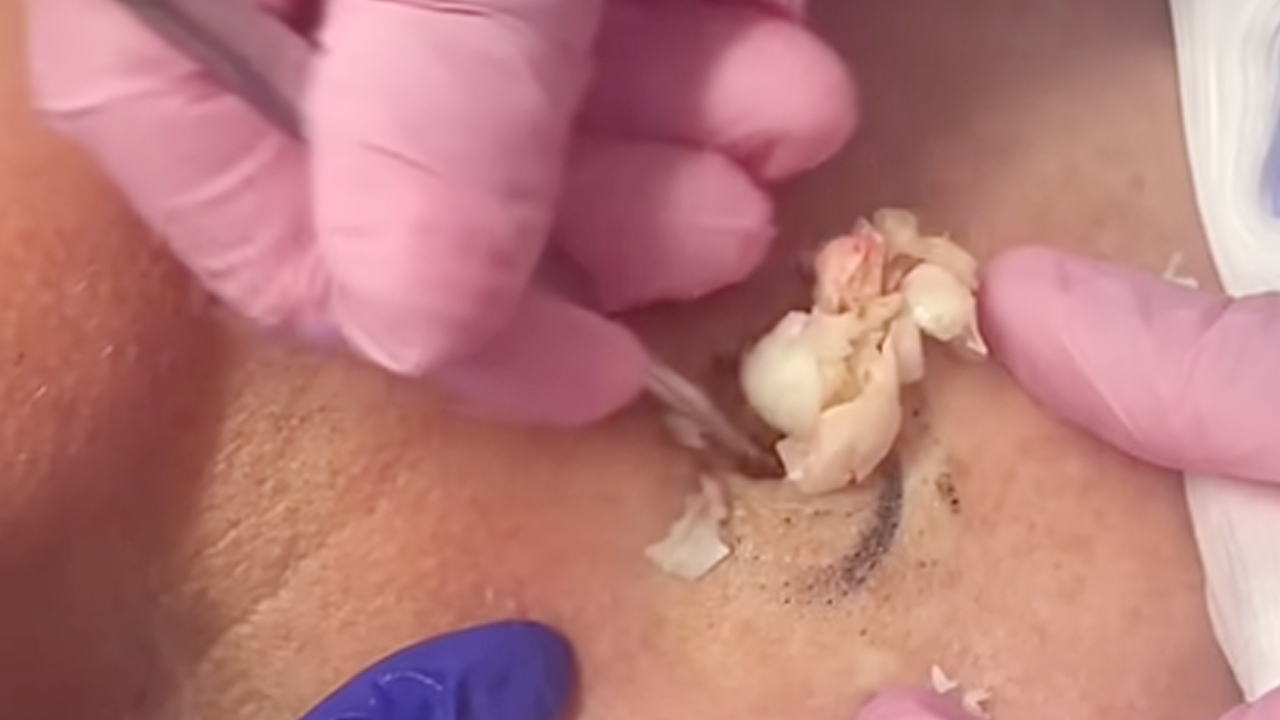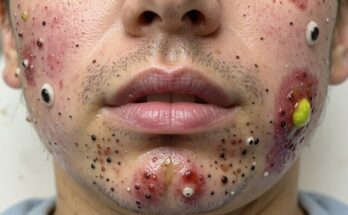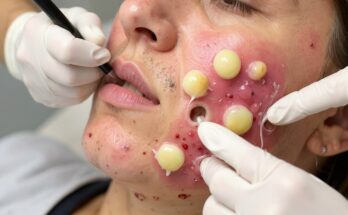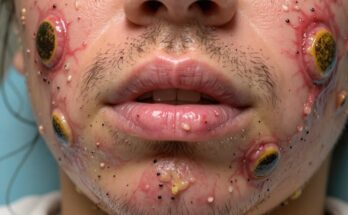Banishing Blackheads: A Comprehensive Guide to Clear Skin
Blackheads, those pesky dark blemishes, are a common skin concern. But understanding their cause and employing the right strategies can lead to significantly clearer skin. This guide will walk you through effective at-home treatments, professional options, and crucial preventative measures.
Understanding the Blackhead
What Causes Blackheads?
Blackheads aren’t just dirt; they’re clogged hair follicles filled with a mixture of sebum (oil), dead skin cells, and bacteria. The dark color comes from oxidation – exposure to air causes the trapped material to darken.
Effective At-Home Blackhead Treatments
A multi-pronged approach is key to effectively managing blackheads. Here’s a detailed breakdown of safe and effective at-home methods:
1. The Importance of Cleansing
Cleanse your face twice daily with a gentle, non-comedogenic cleanser. Look for cleansers containing salicylic acid (a BHA, which dissolves oil and unclogs pores) or benzoyl peroxide (which kills acne-causing bacteria). Popular options include CeraVe SA Cleanser and Neutrogena Oil-Free Acne Wash.
2. Exfoliation: The Key to Turnover
Gentle exfoliation is crucial for removing dead skin cells that contribute to clogged pores. Aim for 2-3 times a week using chemical exfoliants like AHAs (alpha-hydroxy acids, such as glycolic acid) or BHAs (beta-hydroxy acids, like salicylic acid). Avoid harsh physical scrubs, which can irritate your skin and potentially worsen blackheads. Paula’s Choice 2% BHA Liquid Exfoliant is a highly-rated option.
3. The Power of Retinoids
Retinoids, like adapalene (available over-the-counter in Differin Gel) or prescription-strength tretinoin, accelerate skin cell turnover, preventing pores from becoming blocked. Start with a low concentration and apply at night to clean, dry skin, followed by moisturizer to minimize dryness. Remember to be patient; you may experience some initial irritation (retinization).
4. Targeted Treatments: Clay Masks and Pore Strips
Clay masks, such as those containing kaolin or bentonite clay, can absorb excess oil and tighten pores. Use them 1-2 times a week. Pore strips can temporarily remove surface blackheads, particularly from the nose, but overuse can lead to irritation and enlarged pores.
5. Manual Extraction: Proceed with Caution
While tempting, manually extracting blackheads at home carries a significant risk of scarring and infection. If you choose to attempt it, thoroughly clean your hands and face, apply a warm compress to open pores, and use clean fingers wrapped in tissue or a sterile comedone extractor. Press gently around the blackhead – never dig or force it. Cleanse the area afterward with a toner or antiseptic. Professional extraction by an esthetician or dermatologist is always the safer option.
Professional Blackhead Treatments
For persistent or severe blackheads, professional treatments offer superior results and minimize the risk of damage:
Options from Your Dermatologist or Medical Spa
- Comedone Extraction: Safe removal of blackheads by a trained professional using sterile tools.
- Chemical Peels: Exfoliate the top layers of skin using acids like salicylic acid, glycolic acid, or TCA (Trichloroacetic acid).
- Microdermabrasion: A gentle sanding process that removes the top layer of skin, clearing debris and improving texture.
- HydraFacial: A multi-step treatment combining suction, exfoliation, and the infusion of hydrating and active ingredients.
- Prescription-Strength Retinoids: Stronger retinoids like tretinoin, adapalene, or tazarotene offer more potent effects than over-the-counter options.
Preventing Future Blackheads: Lifestyle and Habits
Proactive measures are crucial in preventing the formation of blackheads:
- Avoid comedogenic products: Choose skincare labeled as “non-comedogenic” to minimize pore-clogging.
- Regularly change bedding: Wash your pillowcases frequently to prevent oil and dirt buildup.
- Minimize touching your face: This reduces the transfer of bacteria and oil.
- Clean your phone screen: Your phone is a surprising source of bacteria transfer.
- Healthy diet and hydration: Maintain a balanced diet and drink plenty of water; reducing sugar and dairy intake may help some individuals.
When to Seek Professional Help
Consult a dermatologist if:
- Blackheads are widespread, deep, or persistent despite at-home treatments.
- You notice cysts, nodules, or scarring.
- Over-the-counter treatments haven’t shown improvement after 2-3 months.
- You desire stronger retinoid or peel treatments.
By understanding the cause of blackheads and following these guidelines, you can significantly improve your skin’s clarity and overall health. Remember that consistency and patience are key to achieving long-lasting results.



